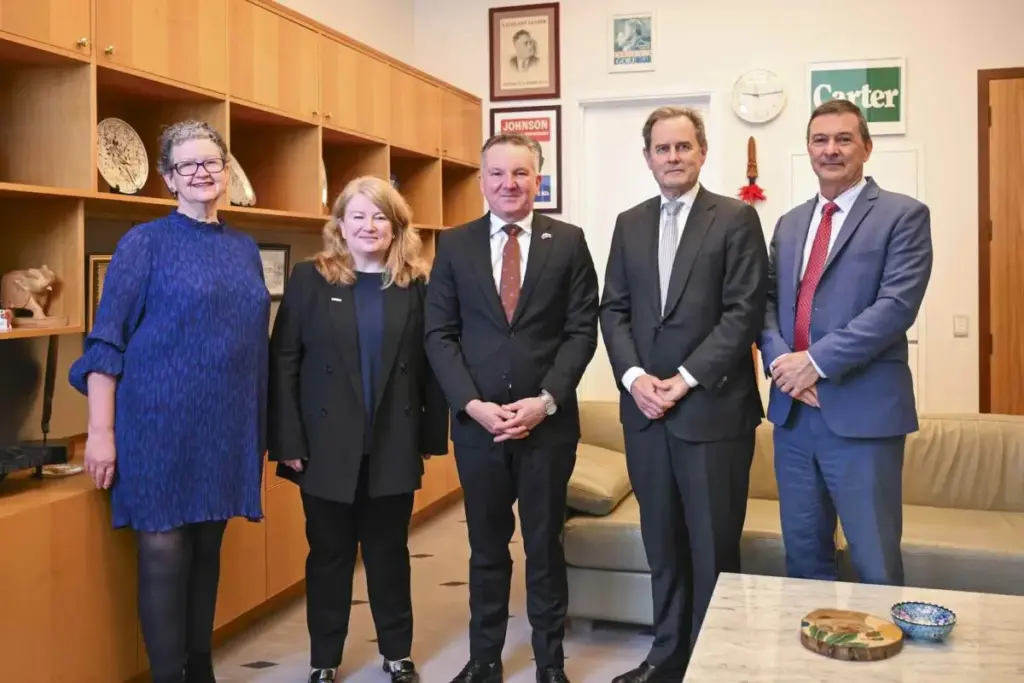
Plans to install an undersea cable linking the electricity grids of Tasmania and mainland Australia have reached a significant milestone with financial closure, thanks to a record multi-billion dollar commitment from the federal government’s green bank. The Clean Energy Finance Corporation (CEFC) announced on Wednesday a “substantially increased” commitment of up to $3.8 billion in concessional finance to support the delivery of Marinus Link—its largest investment to date.
For Marinus Link, the CEFC’s financial backing brings the $5 billion, 750 megawatt (MW) first stage of the project to financial close, allowing the company to issue notices to proceed on its cable and converter contracts. Despite this progress, Marinus Link has faced controversy over escalating costs, leading to the postponement of its second sub-sea cable, and criticism over its approval process by the state Liberal government.
Controversy and Support: A Divided Opinion
While the project forms a key part of the federal government’s renewable energy strategy and the Australian Energy Market Operator’s Integrated System Plan, it remains a contentious issue. Some analysts and environmentalists oppose it on economic and environmental grounds. Marinus Link Pty Ltd (MLPL) CEO Stephanie McGregor, however, expressed optimism, stating, “Marinus Link Stage 1 is now fully funded, we have key Commonwealth and Victorian environmental approvals, a draft regulatory decision, and almost all major contracts in place.”
McGregor added, “Our expert team is mobilising for construction in 2026, and we are thrilled to deliver this critical national energy infrastructure, which will bolster energy security, promote renewable energy investment, and deliver tangible benefits to consumers in Tasmania, Victoria, and the broader National Electricity Market.”
Financial Milestones and Environmental Approvals
Financial closure is the latest in a series of milestones for Marinus Link, following the Final Investment Decisions (FID) in August by the Tasmania, Victoria, and federal Labor governments, which hold 17.7 percent, 33.3 percent, and 49 percent shares in the project, respectively. This was followed by federal environmental approval, albeit delayed, with “strict conditions” concerning threatened species and communities, migratory species, and a Commonwealth marine area.
However, the Tasmanian Liberal government, in caretaker mode at the time, released a Whole-of-State Business Case indicating potential cost increases for major industries in the state, adding to the controversy surrounding the project.
Economic and Environmental Implications
The cost of Marinus Link and its role in enabling new renewable energy projects in Tasmania, such as the contentious Robbins Island wind farm, have been major points of contention. Opponents like independent Tasmanian MP Craig Garland argue the project will lead to widespread wind farm development with significant environmental and cultural impacts. “We don’t need Marinus for Tasmania, and the costs outweigh any benefits in my view,” Garland stated in August.
In response, McGregor claimed that the CEFC’s concessional loan would allow MLPL to deliver Marinus Link “at the lowest possible cost” to consumers. “The CEFC’s long-term concessional finance, along with low-returning equity from the government shareholders, will reduce the impact of transmission-related consumer costs by 45 percent,” she explained, citing analysis based on data from the Australian Energy Regulator (AER) application for revenue determination.
Future Prospects and Challenges
CEFC chief Ian Learmonth noted that Marinus Link is the seventh project financed through the CEFC Rewiring the Nation (RTN) Fund, with total commitments exceeding $7 billion. “As a specialist green energy investor, the CEFC is committed to using our capital to accelerate the delivery of nation-building projects of this scale,” Learmonth said.
CEFC RTN chief investment officer Paul McCartney highlighted the project’s potential to phase out Victoria’s ageing coal-fired generators. “This visionary project will enable Tasmania to share its substantial hydro power energy and wind resources with the much larger National Energy Market, helping firm the grid,” McCartney stated. “It will also provide Tasmanian consumers with access to abundant low-cost solar and wind energy from the mainland, as well as enhanced energy security. This is a win-win for both ends of Marinus Link.”
As Marinus Link progresses, the project faces regulatory hurdles, including a final revenue determination from the Australian Energy Regulator expected in December, and pending state environmental approval. Federal energy minister Chris Bowen emphasized the project’s importance, stating, “Marinus Link is moving from plans on paper to work on the ground—creating thousands of jobs, boosting reliability, and delivering clean power where and when it’s needed.”
Tasmania energy minister Nick Duigan, whose government narrowly retained power after a snap election, expressed optimism about the project’s impact. “This is another important milestone for the project, which promises to deliver lower power prices, create more than 2,000 jobs in Tasmania, generate huge economic stimulus, and deliver intergenerational energy infrastructure,” Duigan said.







